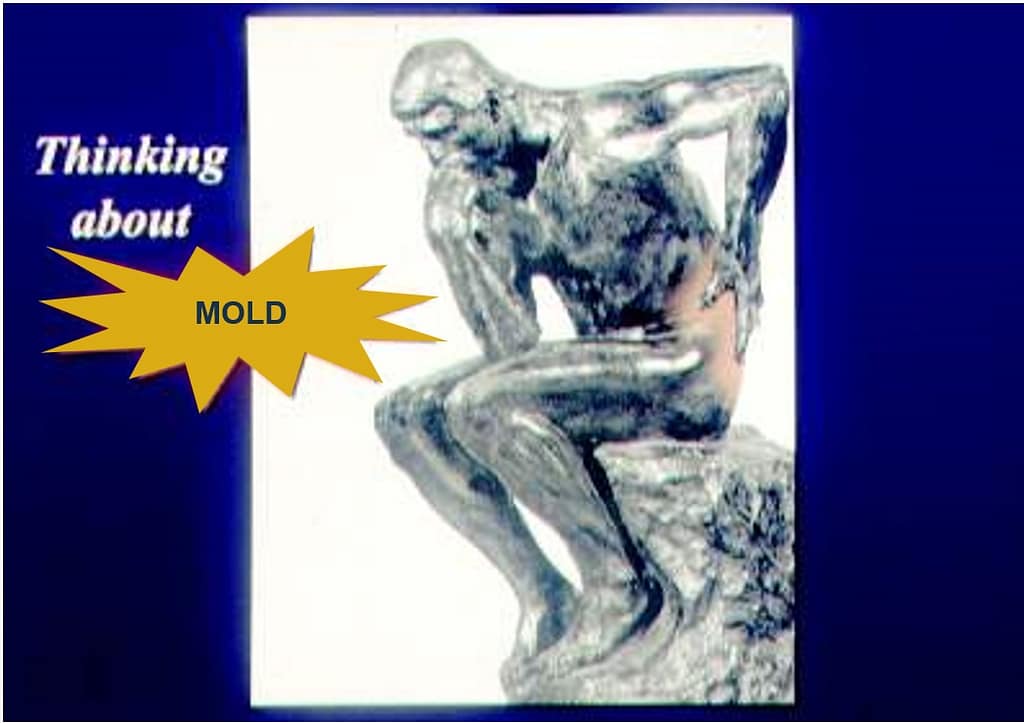Frequently Asked Questions (FAQs)

Is this mold bad for me?
We don’t know since we are not medical doctors and that is who you need to see and get tested.
Globally, there are over 8 billion people and we are all different. Some are allergic to peanuts and some are not. It is the same with mold. Some are allergic to certain species where as others are not, and there are thousands of fungal species. Everyone’s sensitivities to certain things vary.
If there is mold growth (regardless of type) inside an occupied building, it is bad for two reasons: 1) Some occupants may have allergic reactions to it and 2) Mold is growing because there is a water problem (i.e., broken pipe, leaky roof, or poor ventilation and high relative humidity) and the water helps the mold to feed on the building material (i.e., drywall, ceiling tiles, etc.). This is called decomposition (I.e., break down of organic matter) which is a function of mold. Nobody wants to see the building material get decomposed by the mold.
Mold spores are naturally ubiquitous in the air we breathe (i.e. we don’t live in a sterile bubble). When spores land on surfaces that are either made of organic material (i.e. drywall, ceiling tiles, and wood) or covered in organic material (i.e., many types of dust particles like dandruff, hair, pollen, and plant fibers) and the surfaces get wet, the spores can germinate and grow colonies by using the organic material as a food source. The colonies may produce more spores that get aerosolized to elevate spore levels indoors. And, the cycle repeats itself if the water problem does not get fixed. This is analogous to applying grass seed to your lawn and then sprinkling it with water from a hose so that seeds can germinate to produce a nice green back yard.
All living things require water to grow. Some fungal species can grow at lower water activities than the majority of living species on this planet. This is partially the reason why many fungi are good at colonizing indoor surfaces. We will leave important topics such as water activity and relative humidity for a discussion later on, if you are interested.
How do I get rid of mold and prevent it from coming back?
First, find the source of the water problem and fix it, or else the mold will come back and do the same thing since they are ubiquitous in the air around us. You control the water, you control the mold growth (it’s that simple). You prevent mold growth from happening by keeping the building materials dry.
Second, appropriate mold removal practices depends on the type of building material the mold is growing on. Building materials are classified into 3 categories: 1) porous; 2) semi-porous; and 3) non-porous.
1) Porous materials include materials that easily absorb a lot of water (i.e., dry wall and ceiling tiles). If these materials are extremely wet and soggy, and if mold has penetrated the surface, then physically remove and replace. Fortunately, these materials are inexpensive at hardware or building supply stores. If mold has not penetrated the painted surface, then you might be able to remove by rubbing detergent on it or cutting out the impacted area and patching it.
2) Semi-porous materials include those that absorb water to a lesser extent (i.e., wooden studs and floor joists). Test the structural integrity of the wood by puncturing it with a screw driver. If the screwdriver goes through with minimal effort then you know it is rotten and it needs to be replaced. If the screwdriver does not penetrate the wood surface then mold is just restricted to the surface and it can be removed by sanding it off or blasting it off with sand, baking soda, or dry ice.
3) Non-porous materials include inorganic materials (i.e., cement, glass, and metal surfaces). Mold is not utilizing these surfaces as a food source but rather utilizing the organic dust that has been deposited over time, as the food source. Mold can be removed from these surfaces by wiping it off with 5-10% solution of bleach and a rag. Source of moisture in this situation is most likely high relative humidity, poor ventilation (similar to a damp basement) and thermal bridging.
It is typically good practice to either tape plastic sheathing over the moldy areas and nearby items before removing the moldy materials. This helps contain the fungal contamination and minimizes exposure and spreading to other areas. It is also recommended that a respirator and other protective wear be worn, or you can have a professional contractor come out to remove the damaged materials. If you are unsure about what to do, then hire the professonals.

